How to Make Your Home Genuinely Smell Like Fall (The Pro-Level Guide)
I can still smell my grandfather’s workshop in October. It was this perfect mix of cedar shavings, drying applewood, and the faint, sweet scent of pipe tobacco from a tin he kept on his workbench. That combination, for me, is autumn. Scent is so powerful, right? It’s like a secret shortcut straight to a memory or a feeling.
In this article
After years of working with natural botanicals and custom fragrances, I’ve learned that making a home smell good is about so much more than a quick spritz of air freshener. It’s about building an atmosphere that feels real, layered, and deeply comforting. Sure, you can grab a cheap candle, and that’s fine in a pinch. But if you want to create something truly special, you need to approach it like a craft, almost like cooking or woodworking. It’s part art, part science, and honestly, a lot of fun.
So let’s get into some of the techniques the pros use, so you can go beyond the basic stuff and create something amazing (and safe!) in your own space.
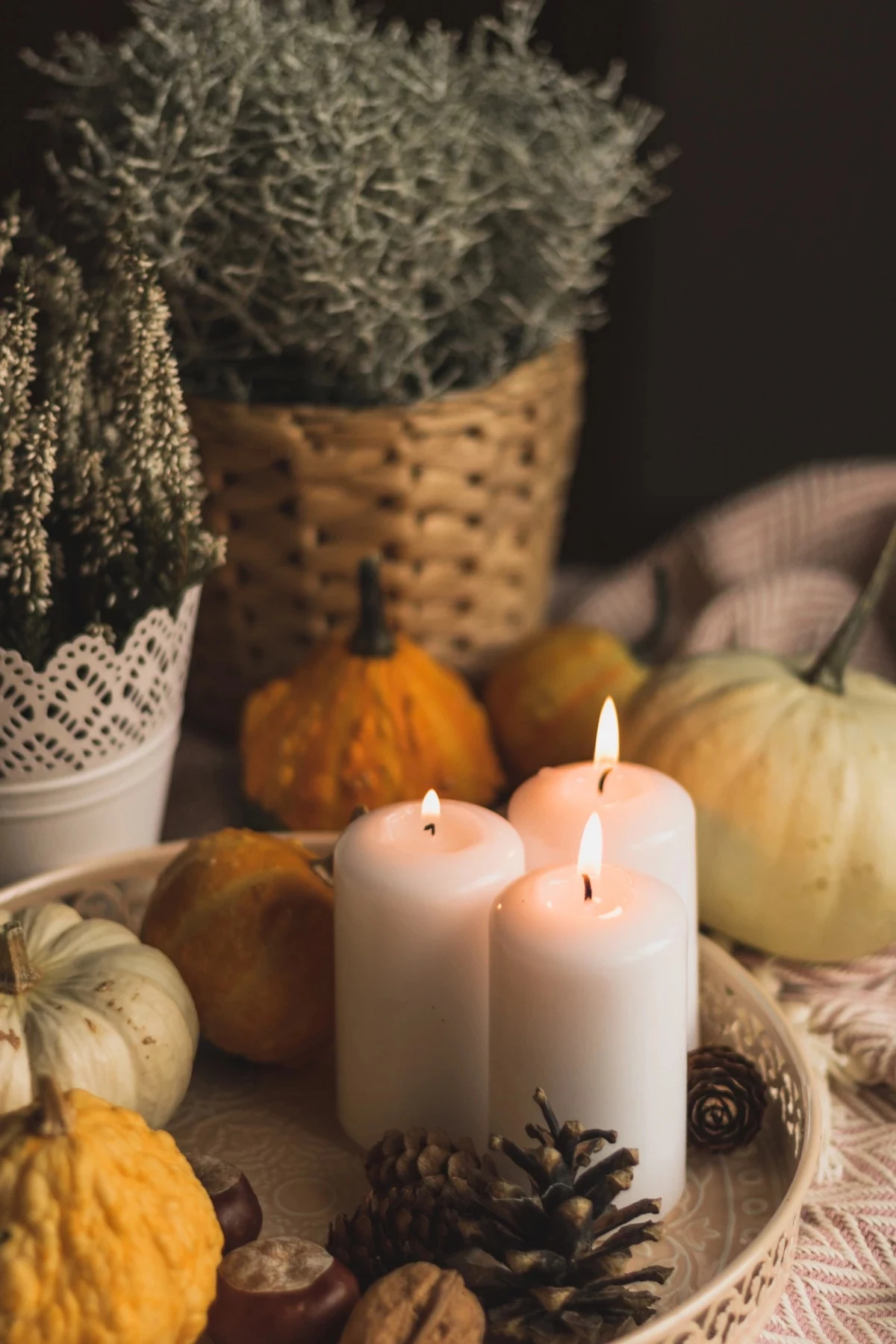
First, Why Do Fall Scents Smell So… Cozy?
Before you start simmering anything, it helps to know what’s actually going on. Understanding the ‘why’ makes you way better at building a scent that lasts. Those classic fall aromas—cinnamon, clove, vanilla—are all thanks to specific compounds in spices and woods. When you heat them up, you’re basically helping these compounds turn into a gas, which then travels through the air to your nose. It’s the reason a warm apple pie smells a thousand times stronger than a cold one.
We can also borrow a handy concept from the world of perfume: scent notes. Thinking this way is the key to layering.
- Top Notes: These are the first thing you smell. They’re bright, light, and evaporate quickly. Think citrus like orange and lemon, or fresh herbs.
- Middle Notes: This is the heart of the fragrance, what you smell after the top notes fade a bit. For fall, this is your spice cabinet: cinnamon, clove, nutmeg, and cardamom.
- Base Notes: These are the deep, rich scents that stick around the longest. They provide the foundation. Think woodsy smells like cedar and sandalwood, or warm notes like vanilla and amber.
A truly great home fragrance has all three. It creates a complex scent that evolves, rather than one flat, boring smell. This is how you go from just masking odors to actually designing your home’s signature scent.
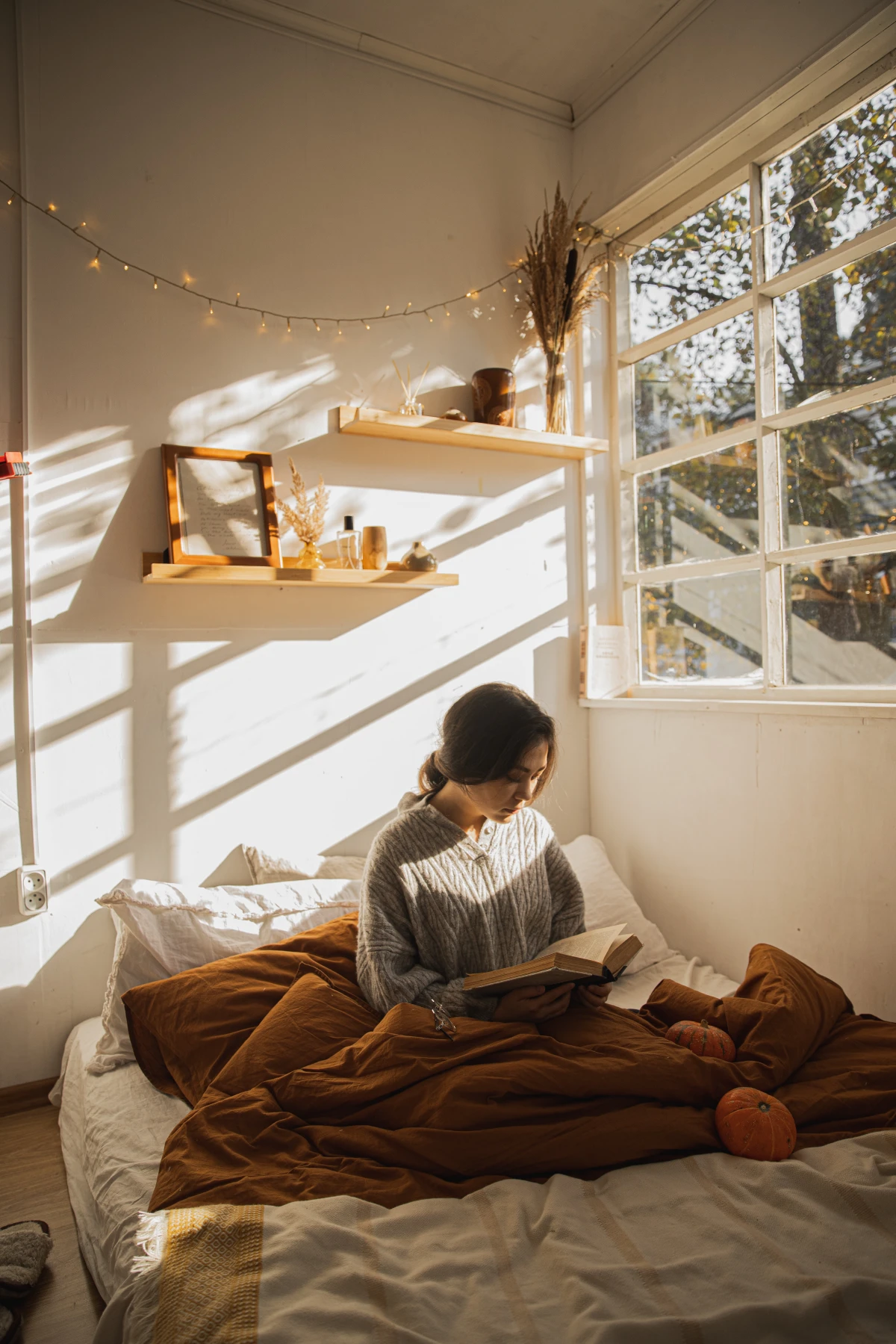
The Classic Simmer Pot: Authentic & Aromatic
When I want to create an incredibly welcoming and authentic scent, especially when guests are coming over, I go for the simmer pot. It’s active, it’s natural, and it fills the home with a moist, rich aroma that just feels genuine. It does require a little attention, but the payoff is huge.
My Go-To Simmer Pot Recipe
You can just toss things in a pot, but for a more balanced and long-lasting scent, a little structure goes a long way. The ingredients for a good simmer pot will probably run you less than $10, and many of the spices can be reused for multiple pots.
- Start with a Liquid Base. Fill a medium saucepan about three-quarters full with water. For an even richer, sweeter base, you can use apple cider instead.
- Add Fruits & Rinds (Top Notes). Sliced apples are perfect—and you can use the peels and cores, so there’s no waste! Add the rinds of one orange. The citrus oils in the rind provide that immediate, bright top note that hits you first.
- Introduce Whole Spices (Middle Notes). Always use whole spices, not ground. Ground spices just make the water murky and can burn. For a standard pot, I use 3-4 cinnamon sticks and about a tablespoon of whole cloves. A couple of star anise pods can add a beautiful, complex depth.
- Anchor it with a Base Note. This is what gives the scent its staying power. Add 2-3 sprigs of fresh rosemary for an earthy, grounding element. Don’t have rosemary? A vanilla bean pod (split lengthwise) or even a teaspoon of pure vanilla extract works wonders here.
Bring it all to a gentle simmer over low heat—no rolling boils! You just want to see a little steam. The scent will start to fill your home in about 20 minutes.
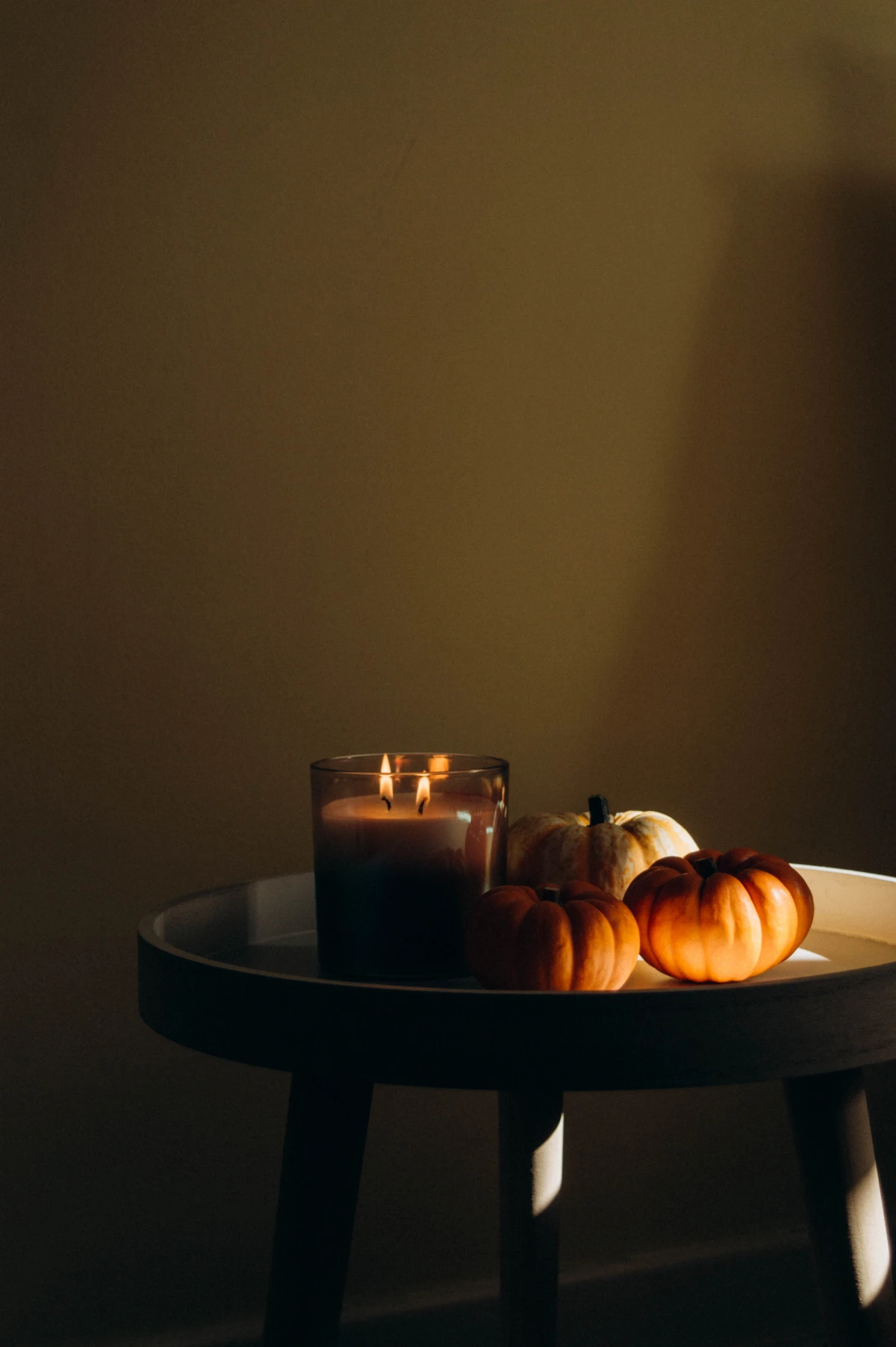
Heads Up: Simmer Pot Safety
This is my most important tip: Never leave a simmer pot unattended on the stove. I learned this the hard way. Early in my career, I got distracted by a phone call and came back to a kitchen full of acrid smoke. The water had boiled off, everything was scorched, and the pan was ruined. It’s a serious fire hazard.
My rule? Set a timer for 60 minutes. Every time it goes off, check the water level and top it off. The ingredients should last a full day of simmering this way. At the end of the day, just toss the contents and start fresh tomorrow.
Scented Candles: What to Look For
Candles are obviously a go-to, but the quality and safety can vary wildly. Let’s look past the pretty label and talk about what really matters.
The Wax: The cheapest candles often use paraffin wax, which is a petroleum byproduct. It throws scent well but can produce soot. I personally lean toward soy or coconut wax blends. They burn cleaner and slower, though sometimes the scent is a bit more subtle. A good quality 8oz soy or coconut wax candle will usually run you between $20 and $40, but it will burn for a lot longer and cleaner than a $10 paraffin candle.
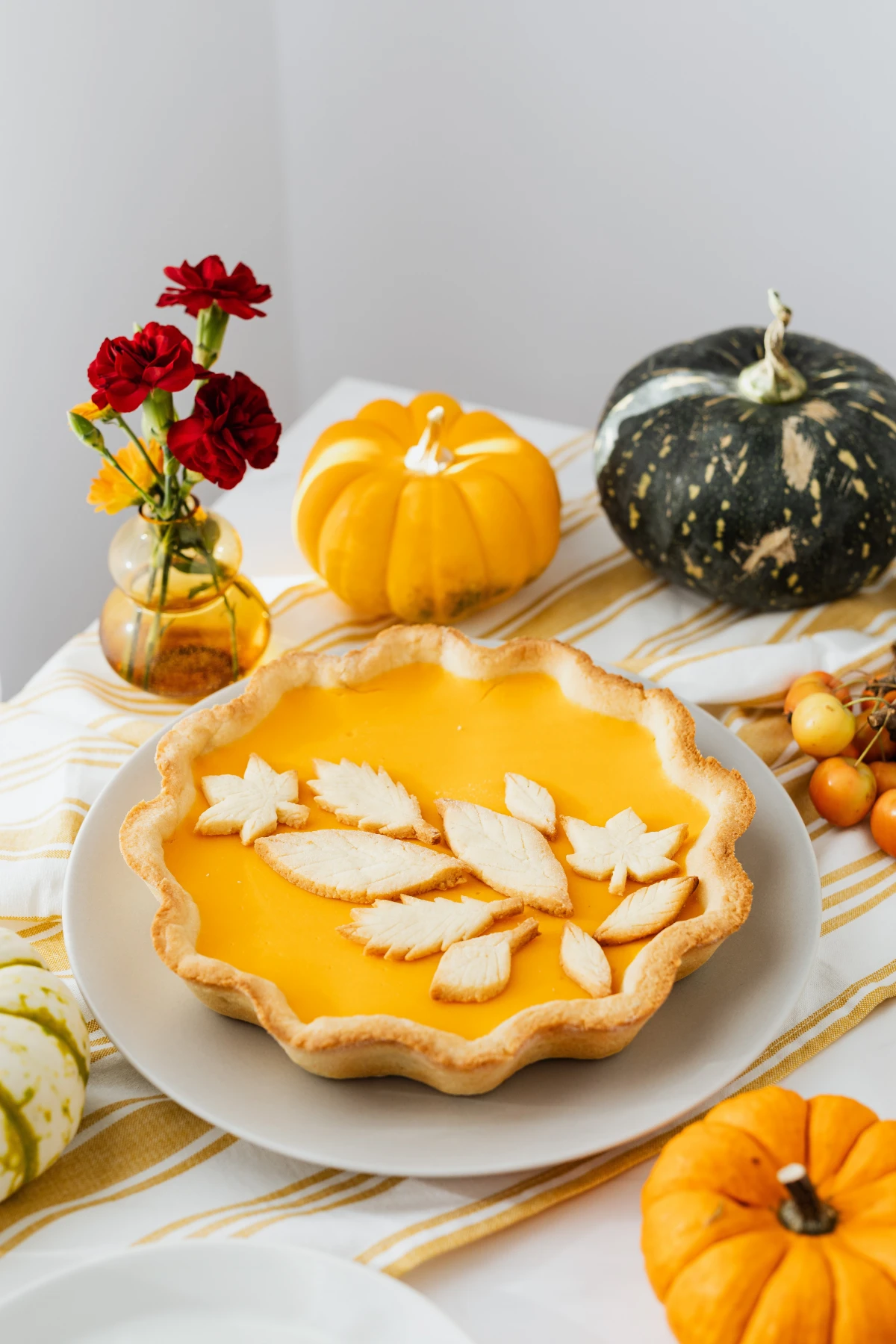
The Wick: The wick is crucial. If it’s too big, you’ll get a giant, smoky flame. Too small, and you get that frustrating “tunneling” effect where the wax only melts down the center, wasting most of the candle.
Quick Tip: To prevent tunneling, the first burn is EVERYTHING. You have to let the candle burn long enough for the melted wax pool to reach the edge of the container. This can take 2-4 hours, depending on the candle’s size. This sets the candle’s “memory” and ensures it burns evenly for the rest of its life.
Diffusers, Wax Melts, and Other Easy Options
If you want a great scent with minimal effort, an essential oil diffuser is your best friend. It’s a “set it and forget it” method that lets you customize your own blends. Just remember that a little goes a long way!
A simple fall diffuser blend to try:
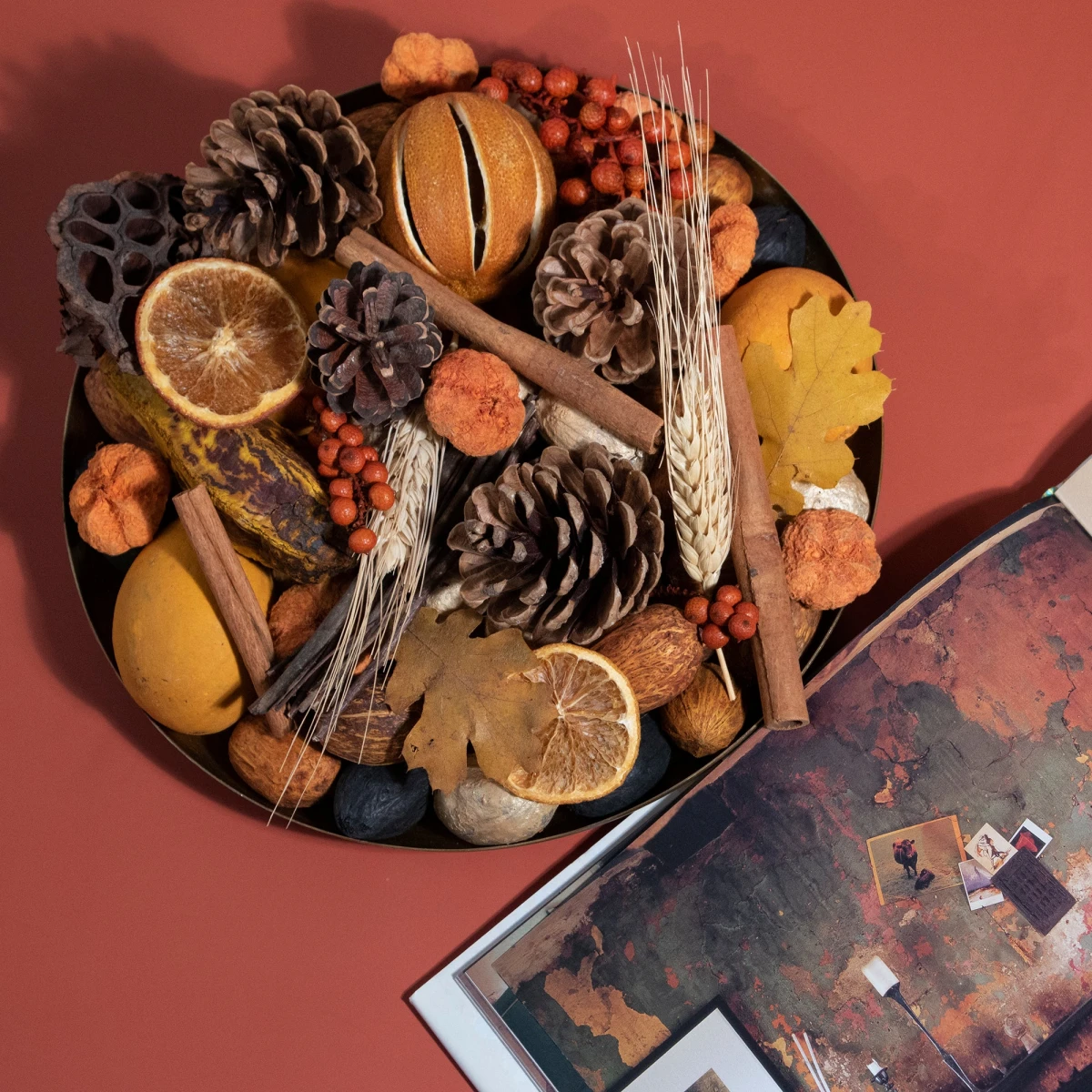
- 4 drops Sweet Orange (your top note)
- 2 drops Cinnamon Leaf (your middle note)
- 1 drop Cedarwood (your base note)
Wax melts are another great option. They’re like wick-less candles. You just pop a scented wax cube into a warmer (electric ones are super safe), and it melts to release the fragrance. They’re often cheaper than high-end candles and you can mix and match cubes to create custom scents.
A HUGE Warning for Pet Owners
Okay, this is critical. Many of the things that make our homes smell amazing are unfortunately toxic to our furry friends. A lot of essential oils—including cinnamon, citrus, pine, and eucalyptus—can be harmful to cats and dogs, especially when diffused into the air they breathe.
Please, be careful. Before using any essential oils, do your research and, better yet, check with your veterinarian. A simmer pot can be a safer option since the ingredients are just whole foods, but make sure the pot is in a place where a curious pet can’t reach it. Your pet’s safety is always, always priority number one.
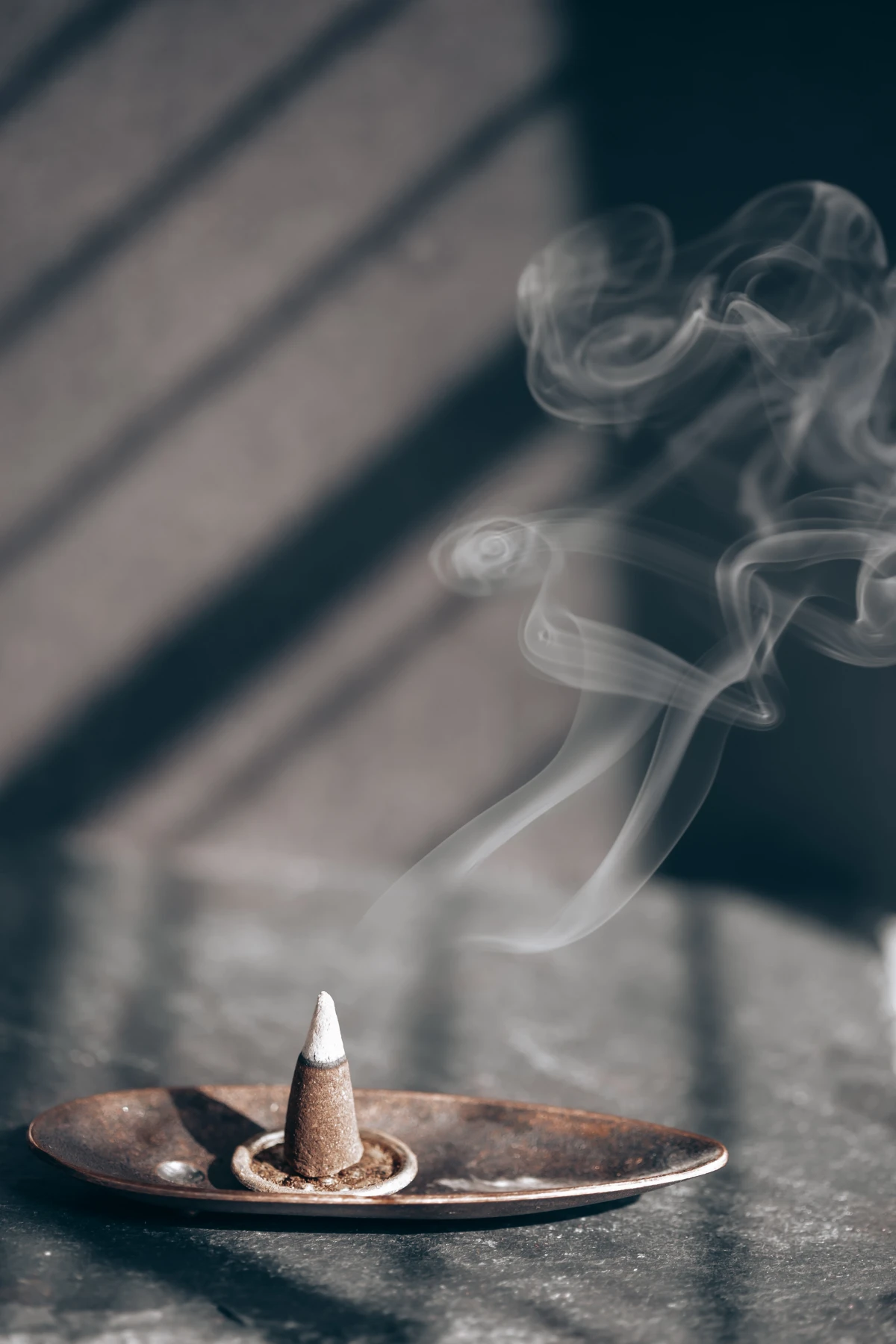
In a Rush? Here’s a 60-Second Trick
Need a quick scent boost before someone comes over? Put a teaspoon of vanilla extract and a single cinnamon stick in a microwave-safe mug with some water. Heat it for about 60 seconds. It will instantly make your kitchen smell warm and inviting. It’s a lifesaver!
Ultimately, creating a scent for your home is a personal journey. Play around with these methods, find what you love, and don’t be afraid to experiment. Happy scent-making!
Galerie d’inspiration
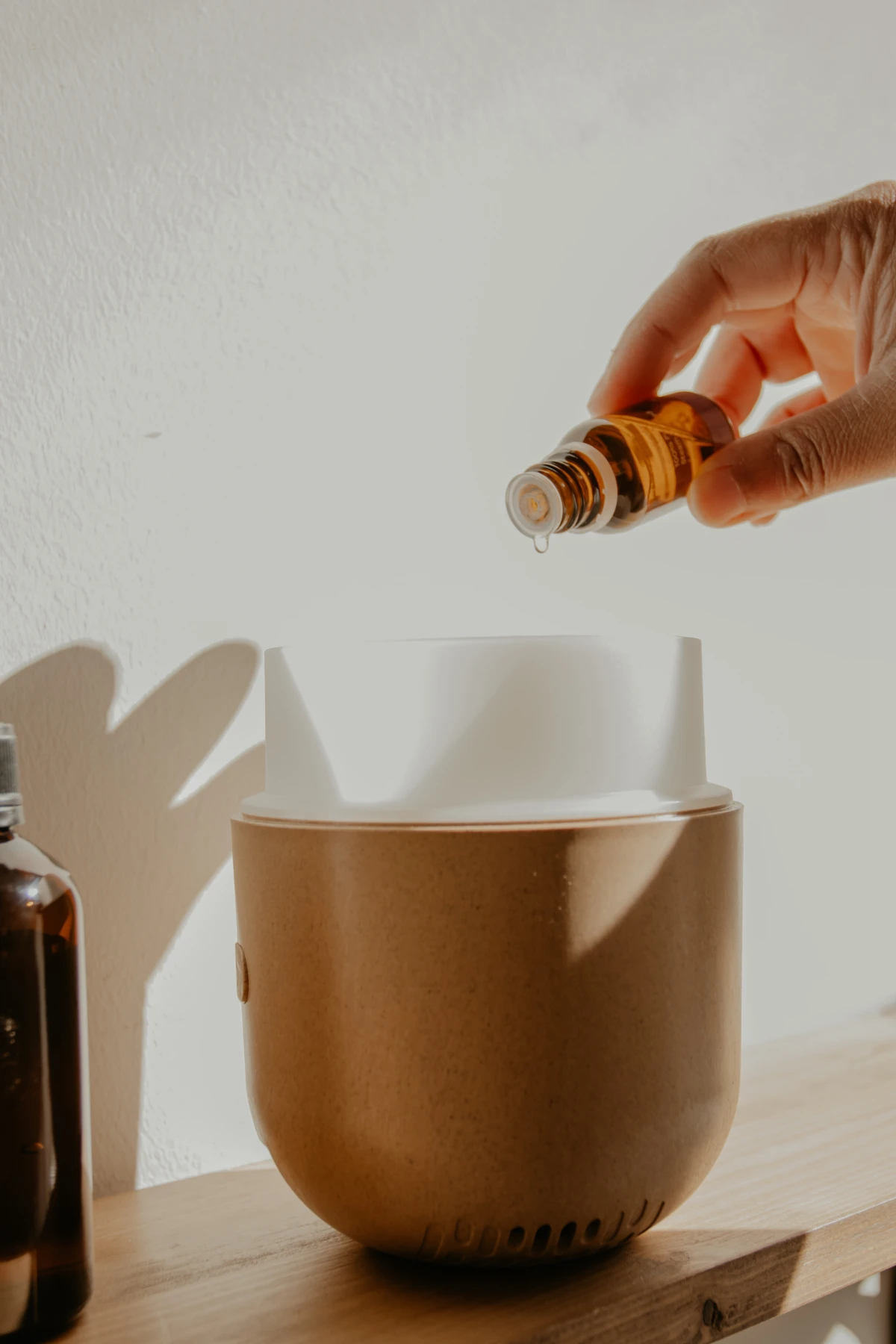
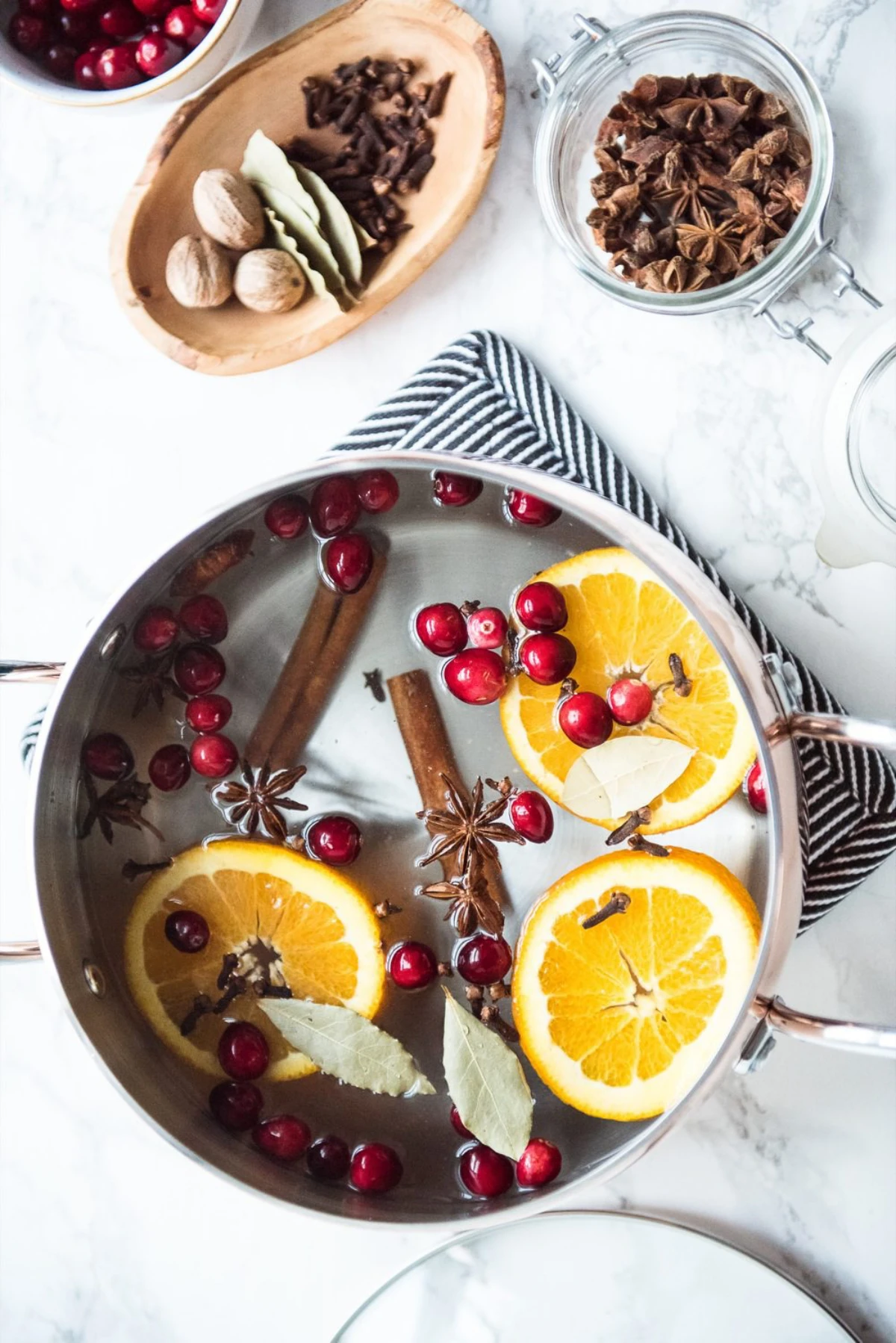
The Woodland Simmer Pot: Beyond the classic apple and cinnamon, you can create a scent that evokes a crisp walk in the woods. This recipe builds a deeper, more complex fragrance foundation.
- A few small sprigs of fresh pine or fir (the key to that forest scent)
- A handful of dried juniper berries
- One star anise pod for a hint of spicy sweetness
- A long peel of orange rind for a bright top note
Simply combine in a small saucepan with water and let it gently simmer on low heat, adding more water as needed.
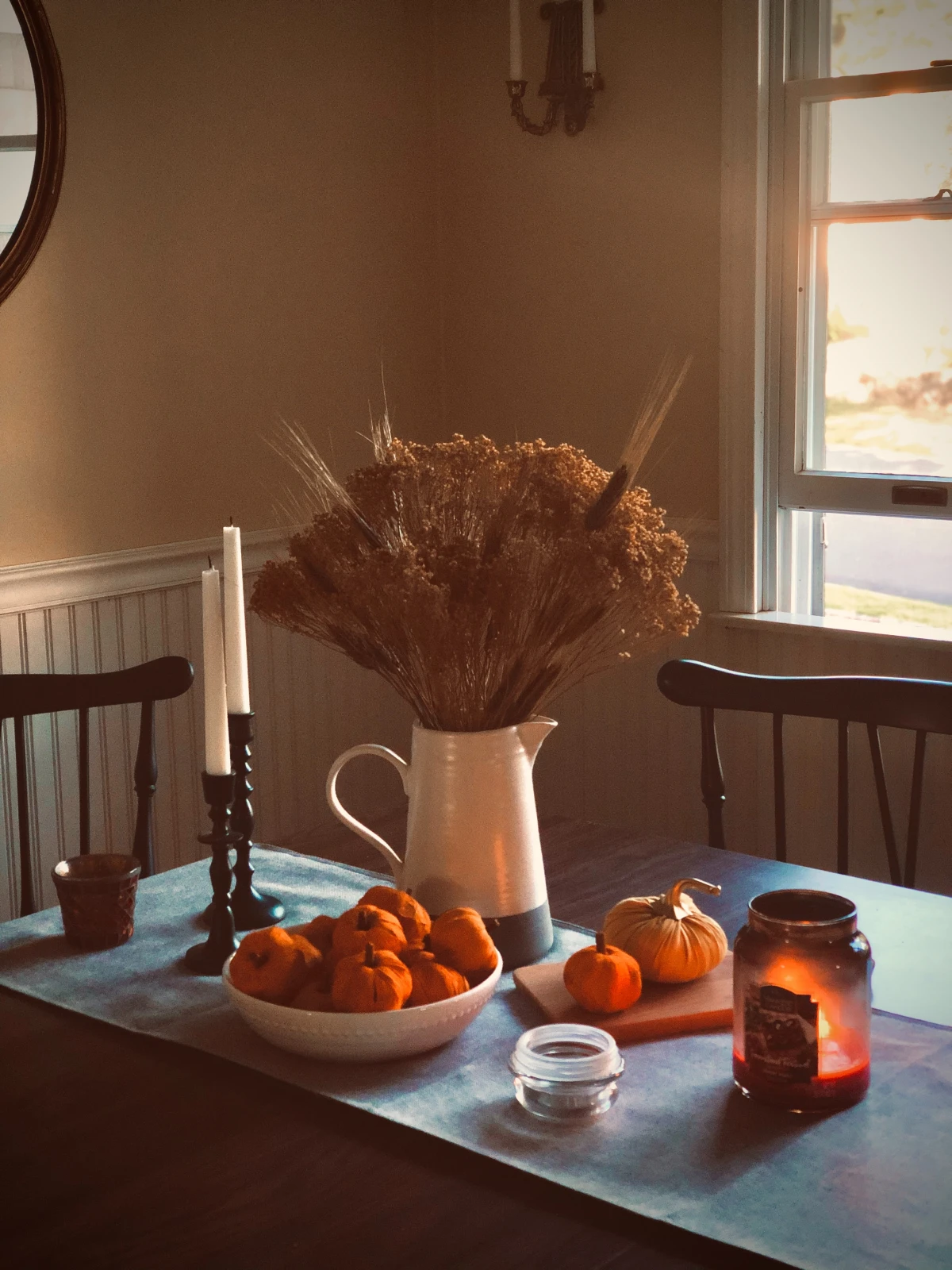
A 2018 study revealed that the scent of cedarwood can decrease heart rate and blood pressure, promoting a state of calm.
This is why woodsy base notes are so powerful in autumn blends. They don’t just smell good; they have a measurable grounding effect. To incorporate this, look for candles made with natural waxes that feature scents like cedarwood, sandalwood, or hinoki. Brands like P.F. Candle Co. or Boy Smells often use these complex wood notes as a sophisticated foundation for their fall collections, moving beyond simple spice scents.
Are all essential oils created equal for diffusing?
Definitely not. For a truly authentic and safe scent, it’s crucial to distinguish between 100% pure essential oils and synthetic ‘fragrance oils’. Fragrance oils are lab-created and can contain undisclosed chemicals. Pure essential oils, like those from reputable brands such as Plant Therapy or Vitruvi, are distilled directly from plants. They provide the true, nuanced scent of the source and are the only option you should consider for diffusion to ensure air quality.










